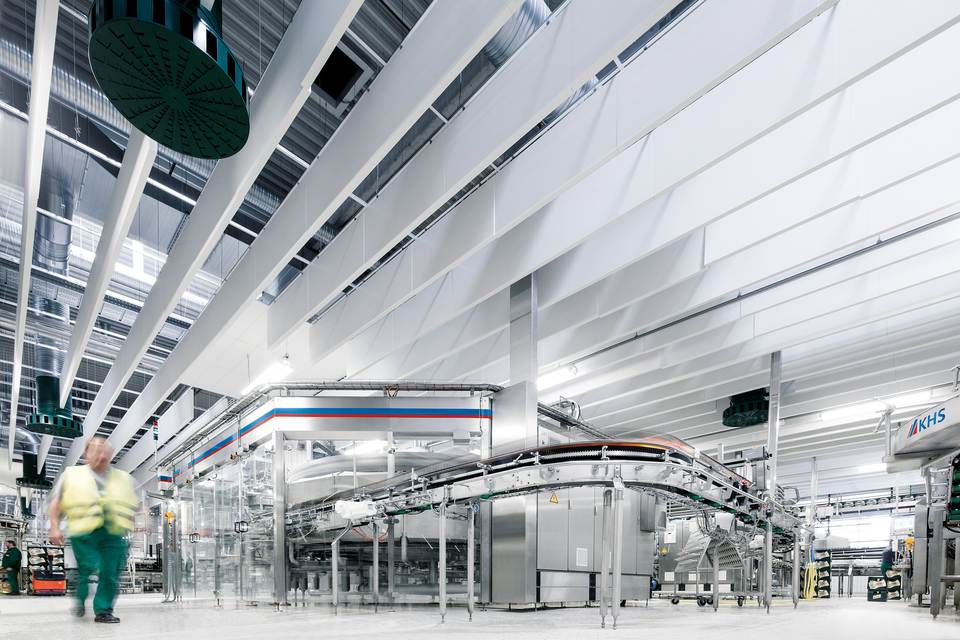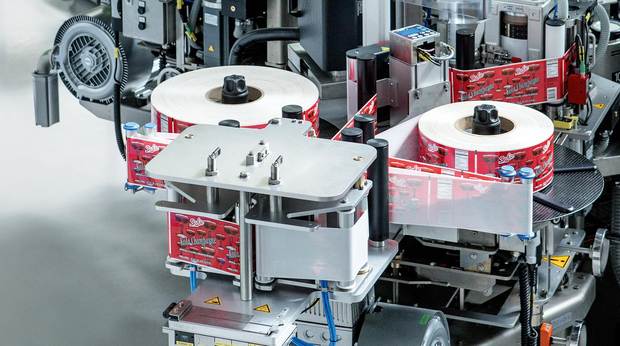“Our philosophy is quite simple,” says Dr. Marc Kusche. “Always strive for the best.” The managing director of Wernesgrüner Brewery knows that each and every detail matters if you want to be one of Germany’s most popular beers. Wernesgrüner pilsner is one such tipple, although the former East German brewery had to work hard to catch up with its competitors in the west. The brewers from the Vogtland in Saxony have been making good beer for almost six hundred years. However, due to the many regulations imposed during the GDR regime before reunification, there was a huge investment backlog.
On his home market in the ’new’ German federal states in the east practically everyone has heard of Wernesgrüner pilsner, fondly known as ’the legend’ by connoisseurs (see ’The birth of a legend’). This makes it easier for new company products to establish themselves on the market. After introducing a shandy in 2006 Wernesgrüner launched a non-alcoholic beer in 2008. Just one year later the German food retail trade named it one of the three most successful new launches in the beer category. Kusche considers one of his chief success factors to be that “providing the best quality is top priority for our shandy and non-alcoholic beer as well as for our pilsner.”
Cutting-edge technology for returnable glass bottles
The brewery sells the lion’s share of its annual output of approximately 750,000 hectoliters in eastern and central Germany. Here, around 85% goes to retailers, with the remaining percentage supplied to the hospitality trade. The returnable, longneck, 0.5-liter glass bottle is especially popular. Says Marc Kusche, “Because returnable glass bottles are so important for us we need future-oriented filling and packaging technology in this area.”
Wernesgrüner thus prepared for its investment in a new filling system very carefully. Thanks to the brewery’s good experience with previous lines from KHS the expert advice offered by its partner was welcome. During consultation KHS showed Wernesgrüner a virtual 3D image of all components on the line in the given layout. The prospective buyers could view the line from all angles, making a virtual tour, ’flying’ over it from above and studying it in detail. Managing director Kusche states, “Our employees should always be able to see each other and give each other hand signals.” With the virtual line tour the machines could then be perfectly positioned. “We were able to get a feeling for the line which gave us the security of investment we needed,” comments Marc Kusche, when talking about the solution his company and KHS came up with.

Wernesgrüner Brauerei was one of the first breweries in the world to install the newly developed KHS Innofill Glass DRS-ZMS filler series. The line fills and packs up to 50,000 glass bottles per hour and meets all the predefined requirements, especially very low oxygen pickup in the product for perfect beer quality in the bottle. Other advantages are:
- Short changeover
- Ergonomic, low-noise working environment
- Simple operation
- Excellent accessibility and
- maximum hygiene.
The new line also shines regarding the issue of sustainability. A combined heat and power plant directly coupled with the line significantly helps to reduce the brewery’s energy consumption, for example (see ’The CHP’). Says Marc Kusche, “The total efficiency of the primary energy used here is over 85%, whereas the usual yield is about 45%. You can imagine that this system is awakening a lot of interest in the brewing sector.” And in saving energy Wernesgrüner is not only profiting from the resulting economic benefits. “We’re also showing how important acting responsibly towards the environment is to us,” emphasizes Kusche. The company presented the new line to the public for the first time during one of its brewery festivals, with several thousand visitors watching how their pilsner legend enters the bottle during production. “With events like this – and many others besides centering on sport and culture – we’re demonstrating our close ties to the people in the region,” claims Kusche. And obviously very successfully, for Wernesgrüner is still growing despite a generally declining market.
In investing in cutting-edge filling technology and sustainable energy concepts the brewery is sticking to its policy of only striving for the best. And because Wernesgrüner actively practices this philosophy, the legend continues.
Looking back: the birth of a legend
Wernesgrüner Brauerei is one of the oldest breweries in Germany. On 18 March 1436, the Schorer brothers were granted a brewing and tavern license for their estate, with the Gläser manor following suit a few decades later. This means that the brewing tradition in the village of Wernesgrün predates the discovery of America by Christopher Columbus by over half a century.
- The first few centuries see many changes of ownership until in the 18th century the Günnel and Männel families take over the two traditional estates and begin promoting beer from Wernesgrün in earnest.
- At the Great Industrial Exposition in Berlin in 1896 Wernesgrüner beer wins a gold medal and becomes the beer of the upper classes, being served on Lufthansa planes and the luxury liners of the famous Hapag-Lloyd Hamburg to America line, among other prestigious environments.
- After World War II the family breweries are expropriated, taken over by the state and in 1974 merged to form the state-run VEB Exportbierbrauerei Wernesgrün.
- The reunification of Germany triggers a new start for the company as a stock corporation in 1990 and in 1994 Wernesgrüner is privatized. Since 2002 Wernesgrüner Brauerei has been part of the Bitburger Brewery Group.
- Its top quality, the result of a brewing tradition carefully upheld for many centuries, earns Wernesgrüner great esteem and a reputation as a pilsner legend.
Looking ahead: The CHP
Wernesgrüner Brewery has always considered sustainability important. This also applies to the new KHS line, where a combined heat and power plant or CHP directly coupled with the line is just one of the features that significantly helps to reduce the brewery’s energy consumption. The key figures:
- Modular plant used to generate electrical energy and heat
- Combustion engines drive the electricity generator
- The electricity produced is used to power the drive technology for the production and supply systems, for example, as well as pumps, compressed air generators, cooling units, and lighting
- Waste heat from the power generator is destined for use in process engineering, such as the bottle washer, crate washer, flash pasteurizer, and CIP system
- Surplus thermal energy can be used to heat offices, warehouses, and employee social rooms
- The higher total efficiency compared to a standard combination of local heating system plus central power plant results from Wernesgrüner utilizing the waste heat generated by electricity at source.
The result: The total efficiency of the primary energy used is over 85% (the usual yield is about 45%). In addition, a connected heat storage tank (22 meters high, 5 meters in diameter) is divided into zones containing water kept at various temperatures. The warm water is either fed to the line or retrieved from it and directed back into the storage tank. This system results in an optimized use of thermal energy.
Your contact on this topic
Wolfgang Augel
head of Sales Germany (beer, wine, spirits)
KHS GmbH, Dortmund, Germany
Phone: +49 231 569-1635
Email: wolfgang.augel@khs.com






















